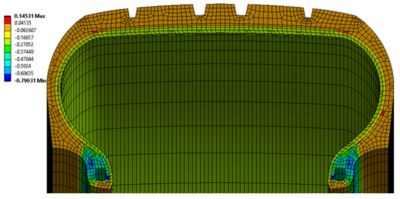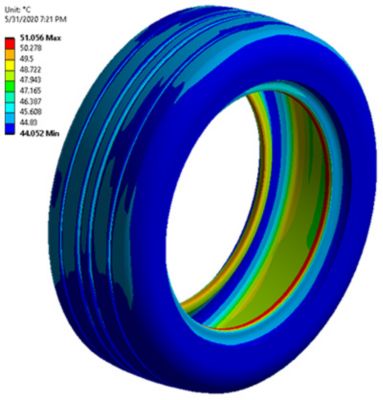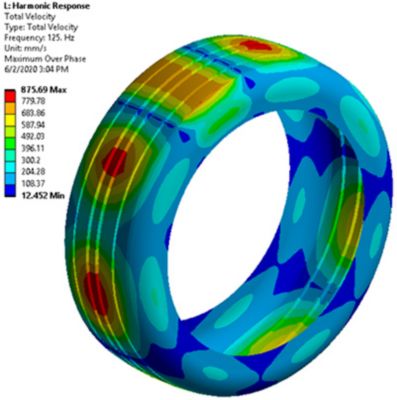-
-
Software gratuito per studenti
Ansys potenzia la nuova generazione di ingegneri
Gli studenti hanno accesso gratuito a software di simulazione di livello mondiale.
-
Connettiti subito con Ansys!
Progetta il tuo futuro
Connettiti a Ansys per scoprire come la simulazione può potenziare la tua prossima innovazione.
Paesi e regioni
Customer Center
Supporto
Partner Community
Contatta l'ufficio vendite
Per Stati Uniti e Canada
Accedi
Prove Gratuite
Prodotti & Servizi
Scopri
Chi Siamo
Back
Prodotti & Servizi
Back
Scopri
Ansys potenzia la nuova generazione di ingegneri
Gli studenti hanno accesso gratuito a software di simulazione di livello mondiale.
Back
Chi Siamo
Progetta il tuo futuro
Connettiti a Ansys per scoprire come la simulazione può potenziare la tua prossima innovazione.
Customer Center
Supporto
Partner Community
Contatta l'ufficio vendite
Per Stati Uniti e Canada
Accedi
Prove Gratuite
ANSYS BLOG
October 20, 2020
How to Optimize Winter Tire Designs
In many parts of the world, there is a nip in the air and we are beginning the task of winterizing our lives: preparing our homes and gardens, getting our jackets out and — for folks in northern climes — changing to our winter tires.
In regions prone to harsh winter weather, “black ice” and sleet create particularly hazardous driving conditions. Black ice is aptly named because it is so transparent that it takes on the appearance of the roadway beneath it, making it hard to spot and avoid. Thankfully, advances in vehicle safety, including tire design, have made travel in challenging weather conditions far safer.
Simulation technologies have advanced the state of the art in tire design. Even before manufacturing a new tire design, simulation enables you to gain important knowledge of how tires will perform in different conditions. For example, through footprint analysis, designers attain a clear picture of the traction and handling of the tire. Other examples include free rolling and braking performance, which are often evaluated using steady-state rolling analysis.
Such analyses are critical, especially on icy roads, where the softer compounds in winter tires provide extra traction and shorter braking distances. Simulation helps you to optimize tire design parameters for handling characteristics without compromising tire life.
Watch the “Analyzing and Simulating a Tire” webinar to learn more.
The capabilities in Ansys Mechanical make it an ideal choice for tire design. The ability to represent details including the layered plies, reinforcements and tread pattern allow for advanced, accurate tire modeling.
Tire Design: Mapping 2D and 3D Analyses
Mapping results from an initial 2D axisymmetric analysis to a 3D analysis provide a computationally efficient framework to model initial mounting and inflation followed by footprint or cornering studies.
The optimal workflow to optimize tire shape and reinforcement details includes creating a 2D cross-section of the tire in Mechanical and performing 2D tire mounting analysis and 2D inflation analysis. A 3D meshed model is then created from the 2D cross section to perform final analyses, including 3D inflation, footprint, steady-state rolling, steady-state rolling with different camber angles and 3D rollover bump analyses.
Contact pressure at the end of footprint analysis in Ansys Mechanical
You can perform steady-state rolling analysis in Mechanical via an Arbitrary Eulerian Lagrangian approach, where the inertial effects of rolling tires are accounted for in a static framework. This includes accounting for different camber angles. You can also evaluate extreme events, such as the behavior and safety of tires when the vehicle rolls over speed bumps, potholes or curbs.
3D tire inflation analysis in Ansys Mechanical
Tire Simulation Temperature Fluctuations and Risk Factors
The lifespan of tires is also strongly affected by over- and under-inflated tires, which can cause excessive wear. You can study the effects of inflation using detailed road surface to tire contact results.
During normal travel, tires can experience heating due to viscoelastic losses in the rubber material. Ansys Mechanical can help you account for energy dissipation and conversion to heat that increases tire temperatures. This is particularly important for safe driving because underinflated tires can experience excessive heating, leading to tire blowouts.
Tires are mainly made of rubber and rubber-based composite material. Due to the viscoelasticity of rubber, a tire in steady-state rolling will generate heat. The energy loss mainly comes from the periodic deformation of rubber in the tire, which is converted to heat, leading to higher tire temperatures and reducing the service life of the tire.
Left: A 3D tire model undergoing thermal analysis in Ansys Mechanical. Right: Harmonic analysis in Ansys Mechanical.
To determine the temperature rise in tires under free-rolling conditions, the first steps are to create a 3D model, and then perform inflation, footprint and steady-state rolling analyses, as stated in the prior section. You can then determine the equivalent stress and strain variation during the period of one revolution, perform a computational fluid dynamics (CFD) analysis in Ansys Fluent to simulate the airflow over the tire and export the data back to Mechanical to solve the model and determine the temperature increases.
Learn more about the comprehensive thermal analysis workflow.
Limit Noise with Tire Simulation
With electric cars becoming common place, rider comfort is of utmost importance. Traditionally, noise from internal combustion (IC) engines helped mask the tire noise, but with silent electric powertrains, you need to ensure tire noise is kept low.
In Mechanical, you can perform a tire pavement noise prediction using harmonic analysis. Harmonic analysis can be performed using steady-state rolling analysis and prestressed modal analysis data, and extracting road surface toughness data and excitation nodes in the contact path.
Thanks to simulation technology, tire technology has advanced to yield smooth, safe driving experiences. To learn more about optimizing tires for winter weather, watch the on-demand webinar: “Analyzing and Simulation a Tire.”




